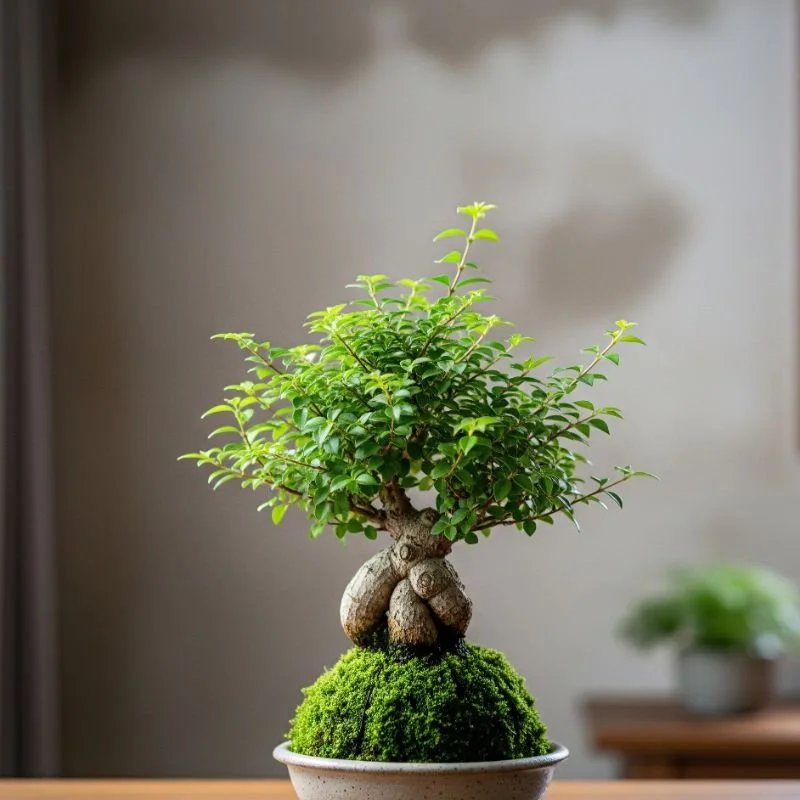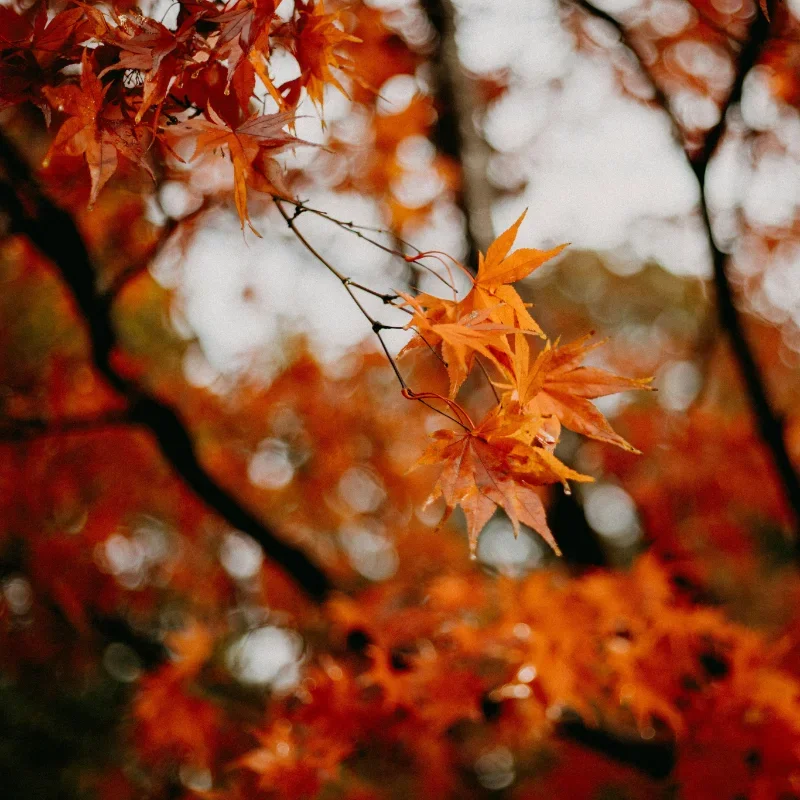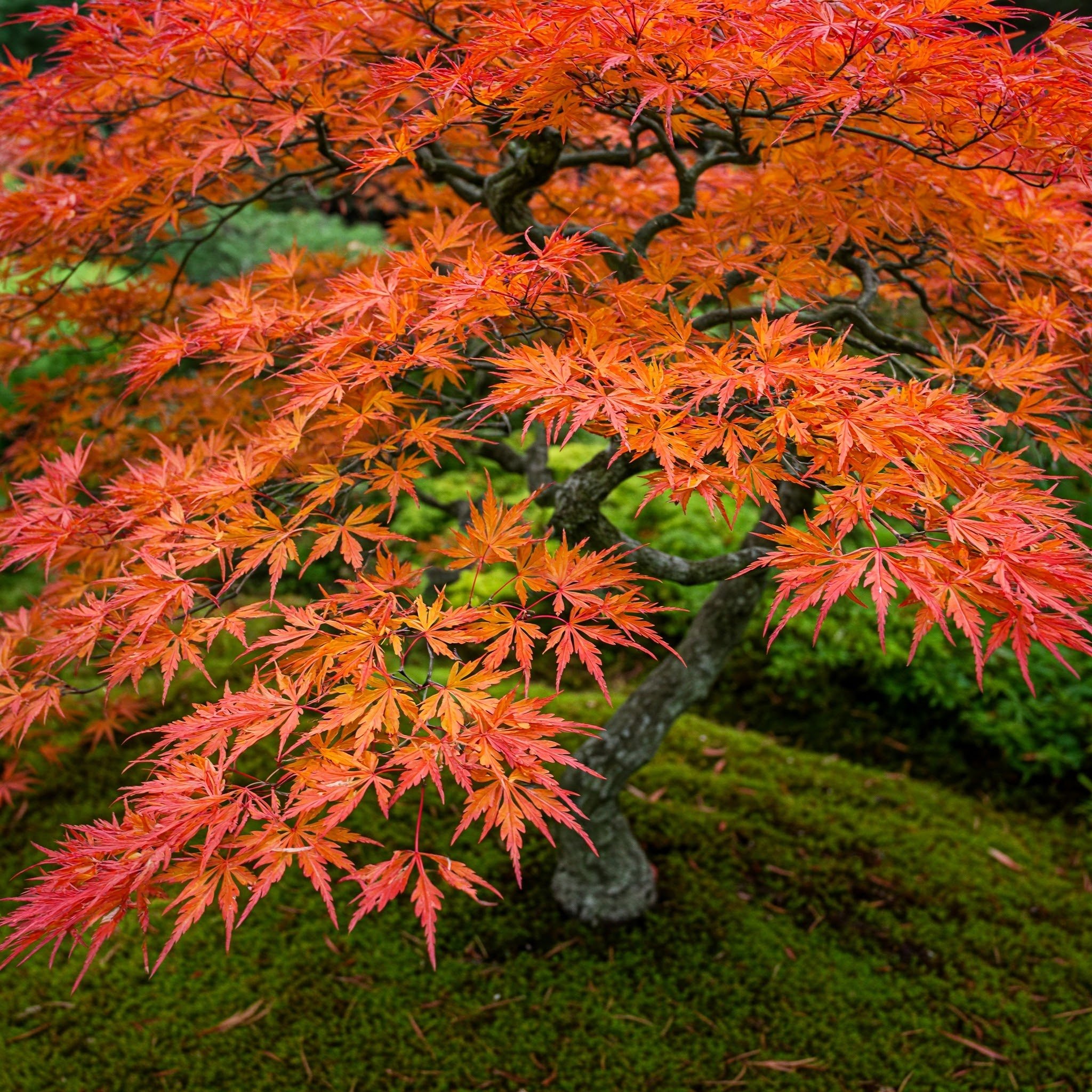15 Japanese Plants Indoor to Bring Zen Into Your Home
Transform your space with 15 Japanese indoor plants that create serene, zen atmospheres while purifying air and bringing mindful beauty home.
Picture this: you're sitting in a tranquil Japanese garden, surrounded by perfectly pruned plants that whisper ancient secrets of balance and harmony. Now imagine bringing that same peaceful energy into your living room, minus the plane ticket to Kyoto! Japanese indoor plants aren't just about adding green to your space; they're living meditation partners that transform chaotic homes into zen sanctuaries. Whether you're a stressed-out professional desperate for calm or someone who just appreciates the minimalist beauty of Japanese aesthetics, these plants offer more than meets the eye. They're teachers of patience, masters of simplicity, and surprisingly forgiving roommates. From the artistic curves of a well-trained bonsai to the architectural elegance of bamboo, each plant carries centuries of cultural wisdom. Ready to turn your home into a personal zen retreat that would make any Buddhist monk jealous? Let's explore these green ambassadors of tranquility!
1. Japanese Maple Bonsai (Acer palmatum)
Transform your space into a miniature Japanese landscape with the elegant Japanese Maple bonsai, the crown jewel of indoor zen gardens. These artistic trees capture the essence of full-sized maples in perfectly proportioned miniatures that change with seasons even indoors. Their delicate, hand-shaped leaves create stunning displays in reds, oranges, and greens, offering year-round visual meditation. Position near a bright window but protect from harsh direct sunlight that might scorch those paper-thin leaves. The art of bonsai teaches patience and mindfulness through regular pruning, wiring, and careful watering routines. These living sculptures thrive in cool rooms with good air circulation, making them perfect for spaces that mirror Japanese homes. Each maple bonsai becomes a unique artwork reflecting your care and artistic vision over years of cultivation.
2. Lucky Bamboo (Dracaena sanderiana)
Despite its name, Lucky Bamboo isn't actually bamboo but brings all the zen vibes without the invasive growth! This resilient plant symbolizes good fortune in Japanese and Chinese cultures, growing beautifully in just water and pebbles. Arrange stalks in odd numbers for optimal feng shui: three for happiness, five for health, or seven for wealth. The sculptural stems can be trained into spirals or hearts, adding artistic flair to minimalist spaces. Place in bright, indirect light and change water weekly to keep your lucky charm thriving. Its low-maintenance nature makes it perfect for beginners wanting instant zen without the commitment of complex care routines. The clean lines and vertical growth pattern embody Japanese design principles of simplicity and purposeful negative space.
3. Japanese Peace Lily (Spathiphyllum)
Bring tranquility and superior air purification with the graceful Peace Lily, a favorite in Japanese-inspired interiors for its elegant white blooms. These forgiving plants communicate their needs clearly: drooping when thirsty, perking up within hours of watering like natural zen bells. Their glossy green leaves and sail-like flowers create visual harmony that complements minimalist decor perfectly. NASA recognized Peace Lilies as top air purifiers, removing toxins while you meditate or work from home. They thrive in low to medium light, making them ideal for apartments with limited natural sunlight. The plant's ability to bloom indoors symbolizes peace and rebirth, core concepts in Japanese philosophy. Just keep away from pets, as they're toxic if ingested by curious furry friends.
4. Kokedama String Gardens
Embrace the floating garden trend with Kokedama, literally meaning "moss ball" in Japanese, where plants grow in soil wrapped in moss and string. This ancient art form creates living sculptures that hang like green planets in your personal universe. Choose small ferns, pothos, or even orchids to transform into these ethereal beauties that seem to defy gravity. The process of making Kokedama becomes meditative itself: mixing soil, wrapping roots, and binding with string requires present-moment focus. Water by soaking the entire ball weekly, watching it darken as it drinks its fill. Display individually or create constellation-like arrangements at varying heights for dramatic effect. These suspended gardens save precious surface space while adding vertical interest that draws eyes upward, expanding perceived room dimensions.
5. Japanese Fern (Athyrium niponicum)
Add silver shimmer to shady corners with the Japanese Painted Fern, whose metallic fronds look like they've been brushed with moonlight. This shade-loving beauty brings color to spaces where other plants struggle, perfect for north-facing rooms or bathrooms. The delicate fronds emerge in spring with purple stems and silver-green leaves that seem almost otherworldly in their beauty. Unlike many ferns, this variety tolerates drier indoor air better, though it still appreciates occasional misting. Its compact growth habit makes it ideal for terrariums or as understory planting in larger containers. The subtle color variations create visual interest without overwhelming minimalist aesthetics. Position where you can appreciate the intricate leaf patterns up close, perhaps on a desk or bedside table for morning meditation focus.
6. Pachira Money Tree
Invite prosperity and positive energy with the braided trunk Money Tree, a symbol of good fortune in Asian cultures. The intertwined stems represent unity and strength, while the five-leafed clusters symbolize the elements in feng shui. This tropical beauty adapts surprisingly well to indoor conditions, tolerating irregular watering better than most houseplants. Place in bright, indirect light and rotate weekly for even growth, maintaining that perfect symmetrical shape. The glossy leaves catch light beautifully, adding life to modern minimalist spaces without cluttering clean lines. Money Trees can grow quite tall indoors, making them excellent floor plants for corners needing height and drama. Their association with financial luck makes them popular gifts for new businesses or homes, spreading good vibes wherever they grow.
7. Japanese Sedge Grass (Carex)
Bring the subtle movement of Japanese gardens indoors with ornamental sedge grass that sways gently with air currents. These fountain-like plants add texture and softness to rigid indoor spaces, their cascading leaves creating natural flow. Choose variegated varieties for extra visual interest, with cream or gold edges that brighten without flowers. Sedge grasses thrive in consistently moist soil, making them perfect for self-watering pots or humid bathrooms. Their grass-like appearance evokes meadow tranquility while remaining compact enough for tabletops or shelving. Use as living mulch around larger plants or mass several pots for prairie-inspired displays. The year-round greenery provides constant connection to nature, essential for maintaining zen atmosphere through all seasons.
8. Fatsia Japonica (Japanese Aralia)
Make a bold statement with Fatsia Japonica's huge, glossy leaves that look like giant hands reaching for enlightenment. This dramatic plant brings tropical vibes to cooler climates, thriving in spots where other large-leafed plants struggle. The deeply lobed leaves can span over a foot wide, creating instant impact in minimalist spaces needing organic sculpture. Despite its exotic appearance, Fatsia tolerates cool temperatures and lower light, perfect for drafty entryways or rooms without southern exposure. Young plants stay compact for years, gradually developing into impressive floor specimens that command attention. The plant's resilience mirrors Japanese philosophy of strength through flexibility, bending without breaking. Occasional misting keeps leaves dust-free and glossy, maintaining that fresh-from-the-garden appearance year-round.
9. Aspidistra (Cast Iron Plant)
Honor the Japanese principle of resilience with Aspidistra, nicknamed Cast Iron Plant for its legendary toughness and longevity. This Victorian favorite thrives on neglect, perfect for busy professionals seeking zen without demanding plant parenthood. The broad, lance-shaped leaves emerge directly from soil, creating clean lines that complement modern Asian-inspired decor. Aspidistra tolerates deep shade, irregular watering, and temperature fluctuations that would kill lesser plants. Choose variegated varieties for subtle pattern interest or stick with solid green for ultimate simplicity. In Japan, these plants often grace traditional homes, valued for their understated beauty and symbolic strength. Their slow growth means less pruning and repotting, allowing more time for actual meditation rather than plant maintenance.
10. Japanese Holly Fern
Introduce architectural interest with Japanese Holly Fern's glossy, serrated fronds that resemble holly leaves minus the prickles. This evergreen fern maintains its sculptural form year-round, providing consistent structure in your indoor zen garden. Unlike delicate maidenhair ferns, Holly Ferns tolerate drier air and occasional neglect, bouncing back from temporary droughts. The leathery leaves resist pest problems and stay attractive even in challenging conditions. Position in medium to bright indirect light for best growth, though they'll survive in surprisingly dim corners. Their moderate size makes them perfect for desktops or plant stands where you can appreciate the geometric leaf patterns. The plant's resilience and evergreen nature symbolize perseverance, a key virtue in Japanese culture.
11. Hoya Carnosa (Wax Plant)
Cultivate patience and beauty with Hoya Carnosa, whose waxy leaves and fragrant star-shaped flowers embody Japanese aesthetic principles. These vining plants grow slowly but reward patient gardeners with clusters of porcelain-like blooms that perfume entire rooms. The thick, succulent leaves store water, making Hoyas forgiving of occasional forgetfulness while teaching mindful watering practices. Train vines around hoops or trellises for controlled growth that mirrors Japanese garden training techniques. Variegated varieties add visual interest even when not blooming, with cream, pink, or yellow leaf margins. The flowers' sweet fragrance intensifies at night, creating sensory experiences that enhance evening meditation sessions. Their longevity means inheriting grandmother's Hoya isn't uncommon, connecting generations through living heritage.
12. Japanese Snake Plant Varieties
Embrace modern Japanese minimalism with Snake Plants, whose sword-like leaves create striking vertical elements in any space. While not exclusively Japanese, varieties like 'Samurai' and 'Mikado' honor Japanese design principles through their architectural forms. These air-purifying champions work overtime, releasing oxygen at night while removing toxins, supporting better sleep and clearer thinking. Their drought tolerance aligns with Japanese concepts of strength through adversity, thriving despite neglect. Arrange multiple plants of varying heights for dynamic displays that mimic bamboo forests in miniature. The rigid leaves provide structure in flowing spaces, anchoring meditation corners or framing doorways with living architecture. Choose compact varieties for desktops or dramatic floor specimens reaching several feet tall.
13. Nandina (Heavenly Bamboo)
Bring four-season interest indoors with Nandina, called Heavenly Bamboo despite being neither heavenly nor bamboo! This versatile shrub offers delicate foliage that transforms from green to red, mimicking outdoor seasonal changes inside. The compound leaves create airy texture without overwhelming small spaces, perfect for Japanese-inspired minimalist design. In optimal conditions, Nandina produces white flowers followed by red berries, though indoor plants rarely fruit. The plant's ability to thrive in various light conditions makes it adaptable to different room exposures. Regular pruning maintains compact shape and encourages colorful new growth, turning maintenance into meditative practice. Its presence in traditional Japanese gardens for centuries speaks to its cultural significance and aesthetic value.
14. Japanese Moss Gardens
Create miniature landscapes with Japanese moss gardens that capture forest floors in shallow containers or glass terrariums. These living carpets require minimal soil and space while providing maximum tranquility through their velvety green surfaces. Choose cushion moss, sheet moss, or mood moss to build rolling hills and valleys that mirror Japanese garden aesthetics. The high humidity requirements make covered terrariums ideal, creating self-sustaining ecosystems requiring minimal intervention. Watching moss slowly spread becomes lesson in patience and natural time scales. Add small stones, miniature figurines, or tiny bridges to create scenes inspiring contemplation and storytelling. These portable gardens fit anywhere: desktops, shelves, or coffee tables, bringing nature's carpet indoors. The simple care routine involves occasional misting and ensuring adequate but not direct light.
15. Orchids in Japanese Style
Complete your zen collection with orchids displayed in minimalist Japanese style, focusing on single stems in simple containers. Choose Phalaenopsis for reliability or challenge yourself with more demanding varieties like Dendrobium. The key lies not in the plant choice but presentation: one perfect bloom stem in a ceramic vessel embodies wabi-sabi philosophy. Position orchids where morning light filters through, mimicking their natural forest habitat without harsh afternoon sun. The months between blooms teach patience, while flower emergence brings anticipated joy. Japanese orchid arrangement emphasizes space around blooms as much as flowers themselves. Use moss to cover potting medium, creating clean finished looks that hide utilitarian plastic pots. These living art pieces bridge Eastern and Western plant appreciation, universal in their beauty yet distinctly Asian in presentation.
Conclusion
Creating a zen home with Japanese plants goes beyond simple decoration; it's about cultivating mindfulness through living companions. These fifteen plants offer various paths to tranquility, from the meditative practice of bonsai to the simple elegance of bamboo. Start with one or two species that match your lifestyle and space, letting your indoor garden grow organically. Remember, the journey toward creating a peaceful environment is as important as the destination. Your zen oasis awaits, one mindful plant at a time!
Read next: 15 Japanese Garden Plants for a Zen Oasis
Frequently Asked Questions
Q1: Which Japanese plant is best for beginners?
A1: Lucky Bamboo requires minimal care, growing in just water, perfect for plant novices starting out.
Q2: Can Japanese plants survive in low light apartments?
A2: Yes, Peace Lilies, Snake Plants, and Aspidistra thrive in low light conditions common in apartments.
Q3: How often should I water Japanese indoor plants?
A3: Most prefer soil drying slightly between waterings; weekly checks prevent both over and under-watering issues.
Q4: Are these plants safe for pets?
A4: Some like Peace Lilies are toxic; research each plant's safety before bringing home to pets.
Q5: Do I need special soil for Japanese plants?
A5: Well-draining potting mix works for most; bonsai and orchids need specialized growing media for success.



















